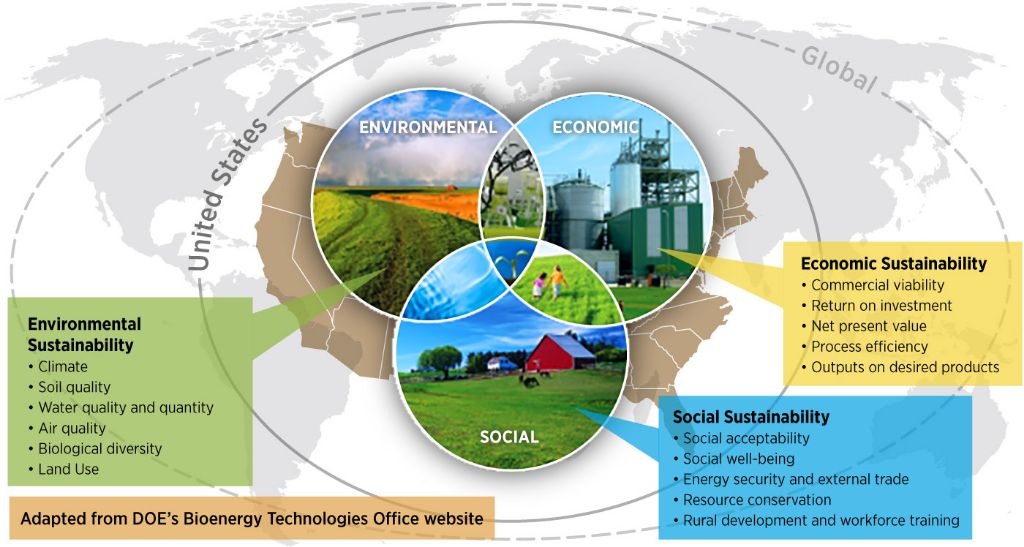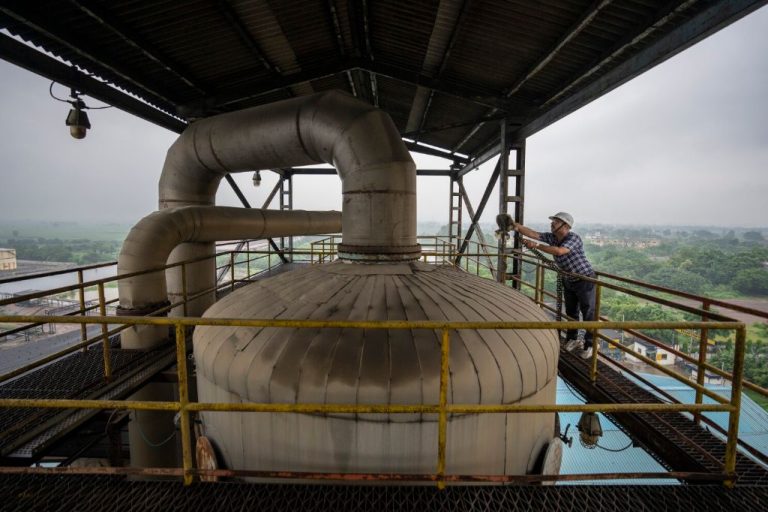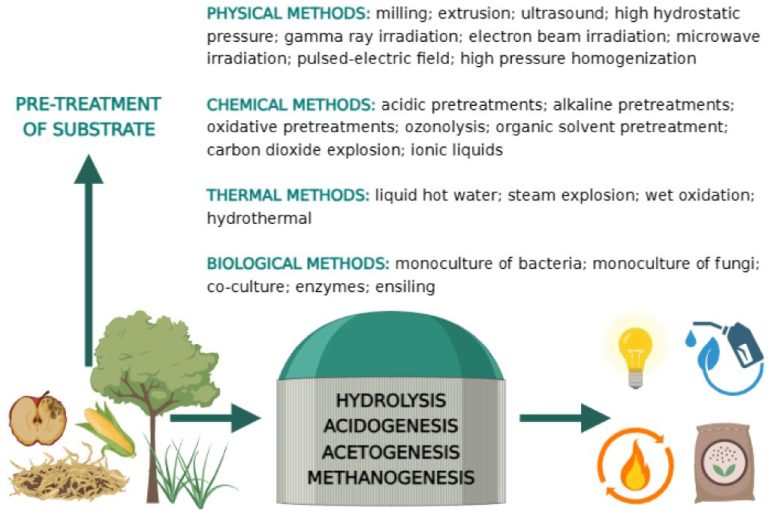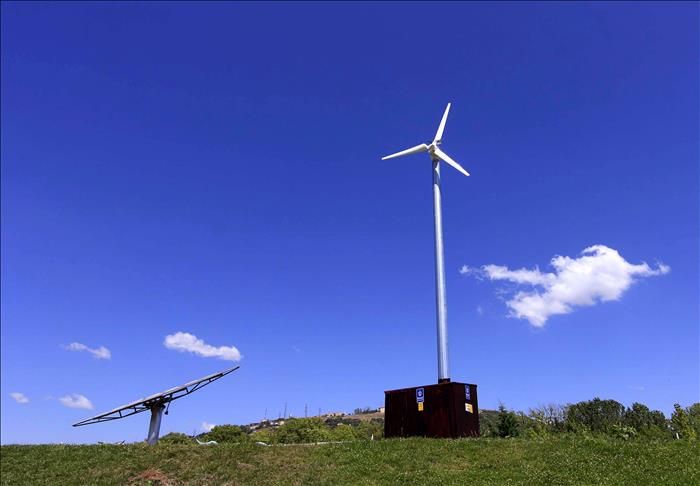What Is Bioenergy Energy Description?
What is Bioenergy?
Bioenergy is renewable energy derived from organic matter, known as biomass. It encompasses any form of energy generated from plant or animal-based materials. The core concept behind bioenergy is using organic waste materials that would otherwise decompose and release carbon into the atmosphere, and instead capturing that energy for human use.
There are three main types of bioenergy:
- Biofuels – Liquid fuels like ethanol and biodiesel derived from crops like corn and soybeans, as well as agricultural and municipal wastes.
- Biomass – Solid organic materials like wood, agricultural residues and waste, used to generate electricity and heat.
- Biogas – Gaseous fuels like methane captured from landfills, sewage plants and animal manure, used for heating and power generation.
The primary sources of bioenergy are plants, trees, crops, and organic waste materials. Any organic matter that comes from recently living plants or animals can serve as a biomass feedstock. The most common sources are:
- Energy crops like corn, soybeans, and switchgrass grown specifically for fuel production.
- Agricultural residues like corn stover and sugarcane bagasse.
- Food waste and municipal solid waste.
- Forestry materials like wood chips and sawmill waste.
- Animal manure and human sewage.
Bioenergy is generated through various processes that convert biomass into usable heat, electricity, and fuel. Most biofuels are produced through fermentation or chemical processing of crops and waste. Biomass is usually converted into energy through direct combustion or transformation into gaseous or liquid fuels. Biogas production relies on anaerobic digestion or fermentation of organic materials. The key aspect across bioenergy production methods is utilizing organic waste and residues that would otherwise decompose and release carbon, giving them added purpose as renewable energy.
Benefits of Bioenergy
Bioenergy provides numerous benefits as an alternative energy source compared to fossil fuels like coal, oil and natural gas. Here are some of the main advantages of bioenergy:

Renewable and sustainable – Bioenergy comes from organic materials like plants, agricultural waste and residues, which can be replenished naturally. This makes bioenergy a renewable resource, unlike finite fossil fuels.
Reduces dependence on fossil fuels – Using bioenergy from renewable sources instead of coal, oil and gas reduces our dependence on fossil fuels. This improves energy security and resilience.
Lower greenhouse gas emissions – Bioenergy emits lower levels of greenhouse gases like carbon dioxide when burnt, compared to fossil fuels. This helps reduce global warming emissions.
Stimulates rural economies – Producing bioenergy from agricultural and forestry feedstocks creates economic opportunities and jobs in rural communities. Farmers gain extra revenue from plant residues and waste.
Challenges of Bioenergy
While bioenergy offers many benefits, it also comes with some key challenges that need to be addressed for it to reach its full potential as a sustainable energy source. Some of the main challenges with bioenergy are:
High upfront costs – Constructing bioenergy facilities requires major upfront investments. This includes costs for securing biomass feedstock, constructing specialized power plants or refineries, and developing the infrastructure to collect and transport biomass. The high capital costs can deter investment into bioenergy.
Competes for land with food crops – Using prime farmland to grow energy crops can potentially displace food production. With a growing global population, utilizing arable land efficiently is crucial. Policies and farming practices need to balance bioenergy production with food security concerns.
Still produces emissions – While bioenergy emits less greenhouse gases compared to fossil fuels, its production and use still results in some carbon emissions. The net emission reductions achieved can also vary based on the feedstock and bioenergy pathway. More research is needed to maximize the climate benefits.
Supply chain logistics – Transporting and storing biomass feedstocks brings challenges. Biomass has a relatively low energy density compared to fossil fuels, so large volumes need to be moved to production facilities. Developing efficient infrastructure for collecting, storing and distributing biomass is key.
Biofuels
Biofuels are fuels derived from biomass or organic matter. The most common types of biofuels are ethanol, biodiesel and biogas.
Ethanol is produced from fermenting the sugars in crops like corn, sugarcane and sweet sorghum. It can be blended with gasoline as a transportation fuel or used on its own in flex-fuel vehicles. Ethanol burns cleaner than gasoline and reduces greenhouse gas emissions. However, there are concerns that large-scale ethanol production competes with food production.
Biodiesel is made by reacting animal fats or vegetable oils with alcohol. It can replace or be blended with conventional diesel fuel. Biodiesel is biodegradable and nontoxic. It also emits less air pollutants than petroleum-based diesel. Biodiesel is more expensive to produce than petroleum diesel but costs could come down with greater production volumes.
Biogas is produced from decomposing organic waste like manure, sewage or crop residues in an oxygen-free environment. The main component of biogas is methane, which can be used similarly to natural gas for heating, electricity generation and transportation. Converting waste to biogas helps reduce methane emissions from landfills.
In addition to transportation, biofuels can provide renewable heat and power. Burning biomass or biogas can replace fossil fuels in boilers and generators. On-farm biogas production can also provide heating and electricity. Biofuels offer energy security benefits by relying on domestically produced feedstocks rather than imported fossil fuels. However, large-scale biofuel production raises concerns about land use changes and impacts on food supplies and biodiversity.
Biomass Energy
Biomass energy is energy derived from organic material from plants and animals. The most common types of biomass used for energy include wood, agricultural crops and waste, and animal manure. Biomass contains stored chemical energy from the sun. When biomass is burned, the chemical energy is released as heat which can be used to generate electricity.
There are a few main ways that biomass is used to produce energy:
-
Direct firing – Biomass is burned in a furnace or boiler to produce high-pressure steam that is used to spin turbines and generate electricity.
-
Co-firing – Biomass is combined with coal in existing power plants to reduce emissions.
-
Gasification – Biomass is heated with a controlled amount of oxygen to produce synthesis gas or “syngas” which can be used to generate electricity.
-
Anaerobic digestion – Bacteria breaks down biomass in the absence of oxygen to produce biogas which contains methane that can be used for heating or generating electricity.
One of the main benefits of biomass energy is that it can be considered carbon neutral. Plants absorb CO2 as they grow and release it when burned, creating a closed carbon cycle with no net addition of CO2 to the atmosphere. However, there can be variability in its carbon neutrality depending on factors like transportation and fertilizer use.
Some common examples of biomass energy sources are:
-
Wood and wood processing wastes from sawmills
-
Crops such as switchgrass and poplar trees grown specifically for energy
-
Agricultural residues like corn stover and sugarcane bagasse
-
Food, yard, and woody waste
-
Animal manure and human sewage
Biogas
Biogas is a renewable energy source produced by the anaerobic digestion or fermentation of organic matter such as manure, sewage, municipal waste, green waste, plant material, and crops. The main component of biogas is methane, which makes biogas a valuable fuel source.
Biogas can be used directly for cooking and lighting, or it can be converted into electricity and heat to power homes, businesses, farms, and more. The anaerobic digestion process that creates biogas also results in a nutrient-rich bio-fertilizer byproduct that can be used to replace chemical fertilizers.
Compared to letting organic waste degrade in open air, the contained anaerobic digestion process allows for methane capture. This is important because methane is a potent greenhouse gas that contributes to climate change if released into the atmosphere.
Using organic waste to produce biogas via anaerobic digestion provides important waste management and sanitation benefits. It diverts waste from landfills and reduces the need for waste incineration. The process reduces odors and pathogens, while creating useful byproducts in renewable biogas and bio-fertilizer. Overall, biogas helps recycle waste into clean energy in a sustainable manner.
Sustainability
The sustainability of bioenergy is an important consideration as the world transitions to renewable energy sources. There are several key factors that determine the sustainability of bioenergy:
Land Use Changes and Biodiversity Impacts
Growth of bioenergy feedstocks like corn and sugarcane can displace forests and grasslands, reducing biodiversity and releasing carbon stored in vegetation and soils. Strategic siting of bioenergy projects and prioritizing marginal, degraded, and abandoned lands over pristine landscapes can help minimize impacts.
Lifecycle Emissions Analyses
The net greenhouse gas emissions from different bioenergy pathways can vary widely. Lifecycle assessments analyze emissions from feedstock production, harvesting, transportation, conversion, distribution, and final use. Sustainable bioenergy pathways minimize lifecycle emissions compared to fossil fuels.
Comparisons to Fossil Fuels
Sustainable bioenergy pathways reduce lifecycle greenhouse gas emissions by 50-90% compared to conventional gasoline or diesel. Some pathways even achieve carbon negative emissions. However, not all bioenergy pathways meet this threshold.
Sustainability Certifications
Voluntary sustainability certification programs like Bonsucro, the Roundtable on Sustainable Biomaterials, and the Roundtable on Sustainable Palm Oil promote environmental and social best practices. Certified bioenergy can provide greater sustainability assurances.
Bioenergy Around the World
Bioenergy production and utilization varies widely around the world. Some countries have made bioenergy a key part of their renewable energy goals and have implemented policies to incentivize growth in the sector. Other countries are just beginning to explore the potential of bioenergy.
Some of the leading countries in bioenergy production include:
- United States – The US is the largest producer of bioenergy in the world, generating over 60,000 MW from biomass sources. Key policies like the Renewable Fuel Standard have driven growth in biofuels.
- Brazil – Brazil is a major producer of biofuels, especially sugarcane ethanol. Bioenergy accounts for around 30% of Brazil’s energy mix.
- Germany – Germany leads Europe in bioenergy production from sources like biogas and wood pellets. The country has set ambitious renewable energy targets for the future.
- China – China is rapidly expanding its bioenergy sector, especially biofuels production from agricultural residues and wastes.
Some examples of major bioenergy projects around the world include:
- Drax Power Station in the UK – Drax generates 12% of the UK’s renewable electricity from biomass sources like wood pellets.
- Raízen biomass power plant in Brazil – This plant uses sugarcane bagasse to generate electricity and is one of the largest biomass power facilities in the world.
- Jilin biomass ethanol plant in China – This is one of Asia’s largest bioethanol production plants, producing ethanol from corn and other grains.
With growing interest in renewable energy globally, bioenergy production is expected to continue expanding around the world in the coming decades.
The Future of Bioenergy
The future looks bright for bioenergy as technology improves, costs come down, and climate change concerns mount. Here are some key trends shaping bioenergy’s future potential:
Technological improvements: Research is leading to more efficient bioenergy production from a wider range of feedstocks. Advanced biofuels, such as cellulosic ethanol made from agricultural wastes, are becoming economically viable. New biorefinery concepts can produce multiple products from biomass. Genetic engineering of energy crops aims to increase yields.
Cost reductions: As technology matures and production scales up, costs are declining substantially. The levelized cost of energy for bioelectricity dropped 65% from 2010 to 2019. Continued scaling and technical gains should reduce costs further.
Potential scale and applications: Studies estimate bioenergy could sustainably provide 20-25% of global energy demand by mid-century. Applications range from power generation to transportation to industrial processes. With sufficient investment and supportive policies, bioenergy production can expand significantly.
Climate change mitigation: Bioenergy with carbon capture and storage (BECCS) offers negative emissions by sequestering CO2 from biomass. IPCC models rely heavily on BECCS to keep global warming below 1.5°C. Bioenergy displaces fossil fuels, helping decarbonize hard-to-abate sectors like aviation.
Conclusions
In summary, bioenergy has many benefits but also faces some challenges. Bioenergy can provide renewable energy from organic matter like plants, animals, and waste. Converting biomass through processes like combustion or anaerobic digestion can generate useful energy products like heat, electricity, transportation fuels, and biogas.
Bioenergy is considered carbon neutral because the carbon emitted during energy generation is recaptured when new biomass grows. This makes bioenergy more sustainable than fossil fuels. Biofuels and biomass energy can supplement or replace non-renewable sources for applications like heating, electricity, and transportation.
However, some criticize bioenergy for competing with food production and encouraging deforestation when biomass crops displace food crops or natural landscapes. The net carbon impact of different bioenergy sources also varies. Sustainably sourced biomass and efficient conversion processes are needed to maximize the benefits.
Overall, bioenergy will likely play an increasing role in the global renewable energy mix. With responsible policies and practices, bioenergy can provide clean energy to help nations achieve their climate goals and reduce reliance on fossil fuels.





